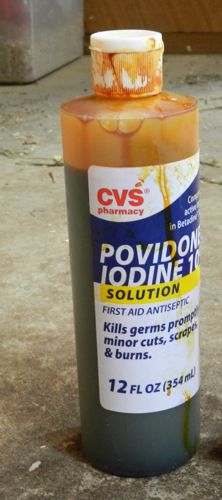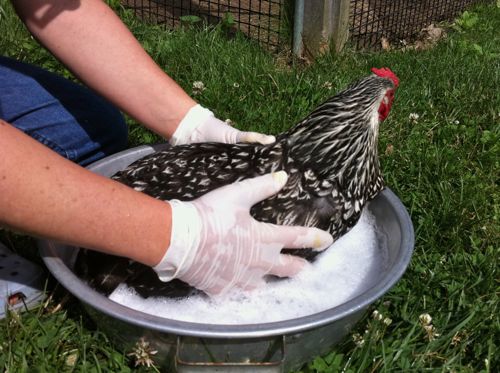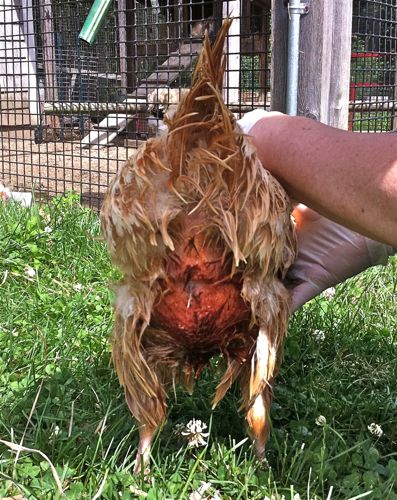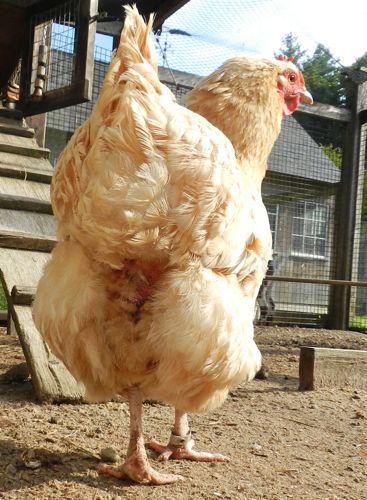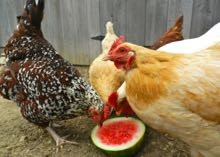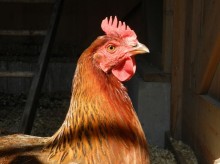One of the reasons that people choose to have chickens is that they are so decorative. Feathers shimmer in a range of hues. Their fluffy-feathered bottoms are both charming and comical. Some breeds are sleek, and some, like my cochin, Pearl, look like fussy Victorian ladies.
What we don’t picture, when we get chickens for the first time, is all of unpleasant stuff that comes out of their backsides. Chickens poop. A lot. Some of it gets stuck on their feathers, especially if the manure is at all runny.
Diarrhea is often the first sign that your hen is sick. However, not all hens with messy bums are ill! Sometimes there’s nothing medically wrong with the chicken, and those clods of manure attached to her feathered bottom simply got stuck and dried on before reaching the ground. Don’t worry. It will eventually fall off. If it’s a real mess you can give your hen a bath. But it’s not necessary.
Then again, some hens have a continuous stream of smelly, thin, runny poo stuck to their feathers. This is often a sign of vent gleet, which is a yeast infection. Vent gleet can be an ongoing problem. Buffy arrived with this ailment and over the years I’ve treated it, and kept it in check, but it never fully disappears. To give a hen with vent gleet some relief, clean give her an epsom salt bath (follow the directions here.) If you’re lucky it will clear up for good. Some hens, though, like Buffy, have persistent cases. I’ve had Buffy for six years and her fluffy Orpington vent feathers have always been yucky. She’s not a hen that I pick up much!
Some hens get mysterious skin ailments. A couple of years ago, Eleanor developed a hot, thick, red skin rash around her vent. Epsom salt baths seemed to make her comfortable but the symptoms didn’t go away. For hens like Eleanor and Buffy, there’s one additional tool in my medicine kit and that’s povidone. Povidone is similar to iodine, but is a stronger, broader spectrum bactericide. (It’s more expensive than bactrine, but worth it.)
For the full treatment, first bathe the hen. Since you will be cleaning the feathers of caked-on manure, it’s not a bad idea to wear disposable gloves. After bathing, do a thorough rinsing off with clean water. If it’s a hot day, you can hold her under a hose. Here is Maizie getting bathed.
Once the hen is cleaned up, squirt the providone on the bare skin near the vent and rub it in. Use gloves and don’t wear clothes you care about. This stuff stains!
This is Buffy’s bum several weeks after treatment. Still no runny, stinky secretions!
Messy bums aren’t the only unsightly butt issue. Sometimes there’s feather loss. That’s covered in a separate FAQ!
Lastly, if your hen has serious diarrhea (not the thin stream like vent gleet, but copious, off-color and liquid) then it could be a sign of a serious underlying disease, like cancer or an infection. If that’s the case, you’ll see other symptoms, like lethargy and discomfort, and sadly the external help mentioned here won’t help.

